A Brief History of Martin Guitars
The world’s most famous acoustic guitar maker is also one of its most innovative and historic – here’s a quick history of the Nazareth icon.
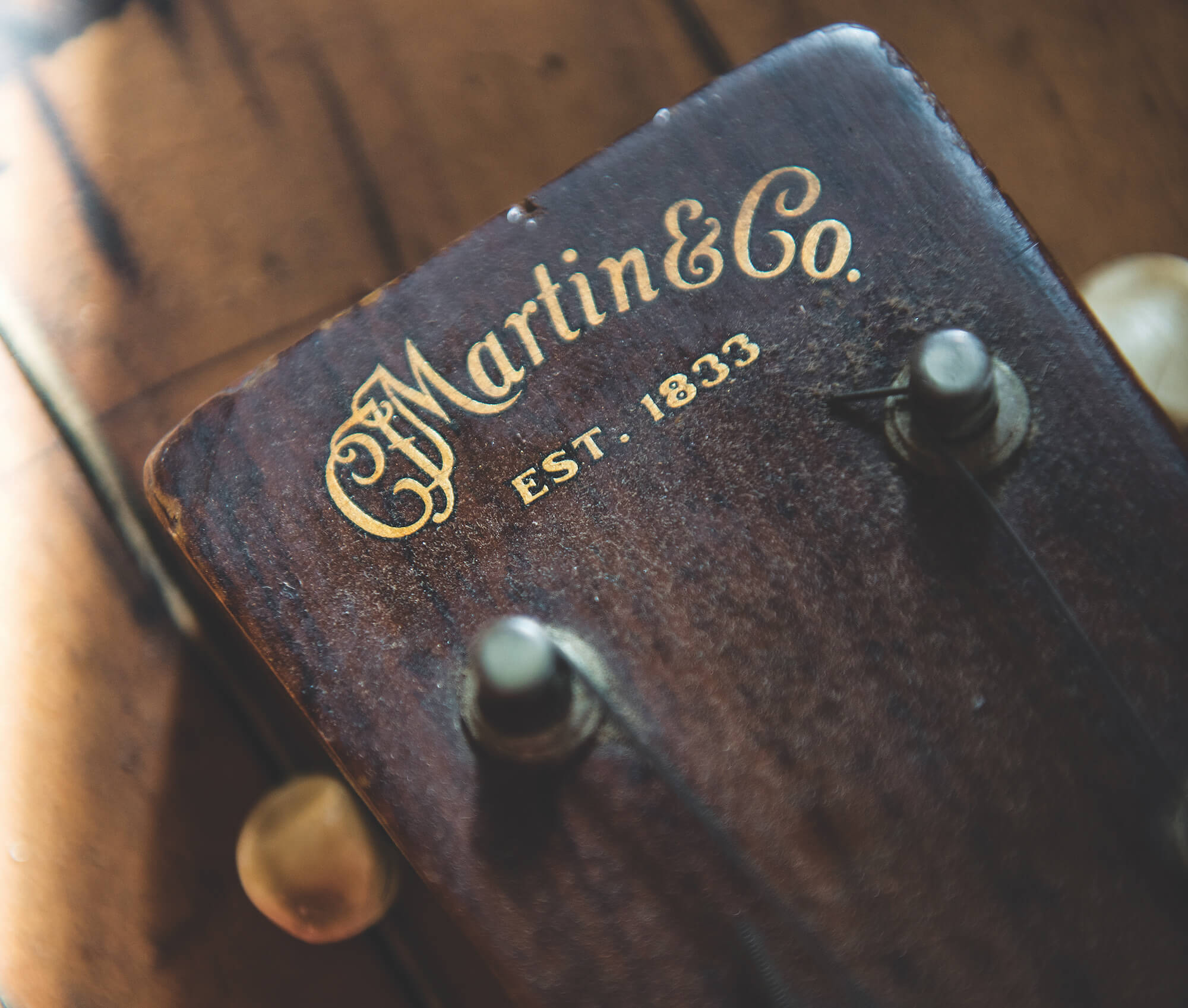
Image: Eleanor Jane
Every guitar company has a unique story, but few are quite as historic and influential as C.F. Martin. After all, if you ask someone to draw a picture of an acoustic guitar and chances are they’ll draw something that looks an awful lot like the company’s iconic Dreadnought body shape.
What’s even more remarkable is that this company, which is rapidly approaching its 200th birthday, has remained a family business throughout all the twists and turns of the guitar’s popularity over the last century, and throughout that time has retained a reputation as perhaps the most famous acoustic maker on earth.
- READ MORE: A brief history of Marshall Amps
The foundation of Martin’s enduring legacy rests on two core principles – quality and craftsmanship. But the brand’s impact extends far beyond these ideals. Throughout its history Martin has continued to find novel, inventive methods of improving the seemingly simple design of the acoustic guitar in constant a pursuit of the best possible sound.
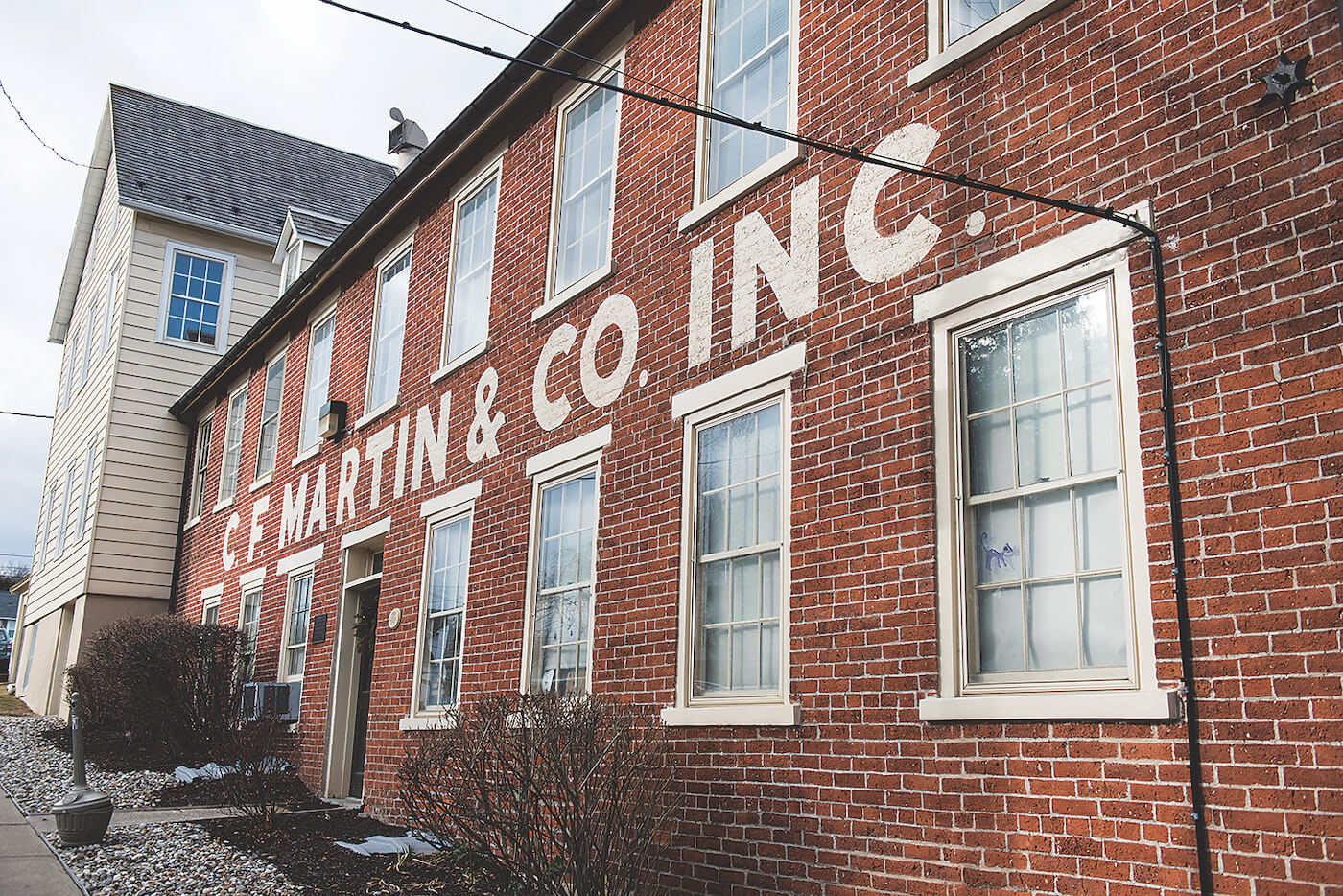
This is perhaps why the brand’s popularity has endured across every generation and genre – from Hank Williams to Elvis Presley, Bob Dylan to John Lennon, John Mayer to Shawn Mendes… it’s probably quicker to write a list of artists who haven’t played Martin guitars.
But every great story has a beginning, and while Martin’s official history began in 1833, the real story starts in late 18th century Germany…
C.F. Martin

Christian Frederick Martin was born in Markneukirchen in 1796, and came from a legacy family of professional woodworkers. He apprenticed under the legendary Viennese master luthier Johann Stauffer then returned to Germany taking with him much that he had learned. However, in those days European trades operated under a strict guild system, and soon after returning home he became embroiled in a dispute between the cabinet makers and violin makers guilds over who had the rights to make the then relatively new invention the ‘guitar’.
The dispute, coupled with his father’s death, inspired Martin to relocate to America, where he opened up a shop on the Lower West Side of New York City in 1833. At the insistence of his wife Ottilia, Martin then moved the operation to Nazareth, Pennsylvania five years later, where the company remains to this day.
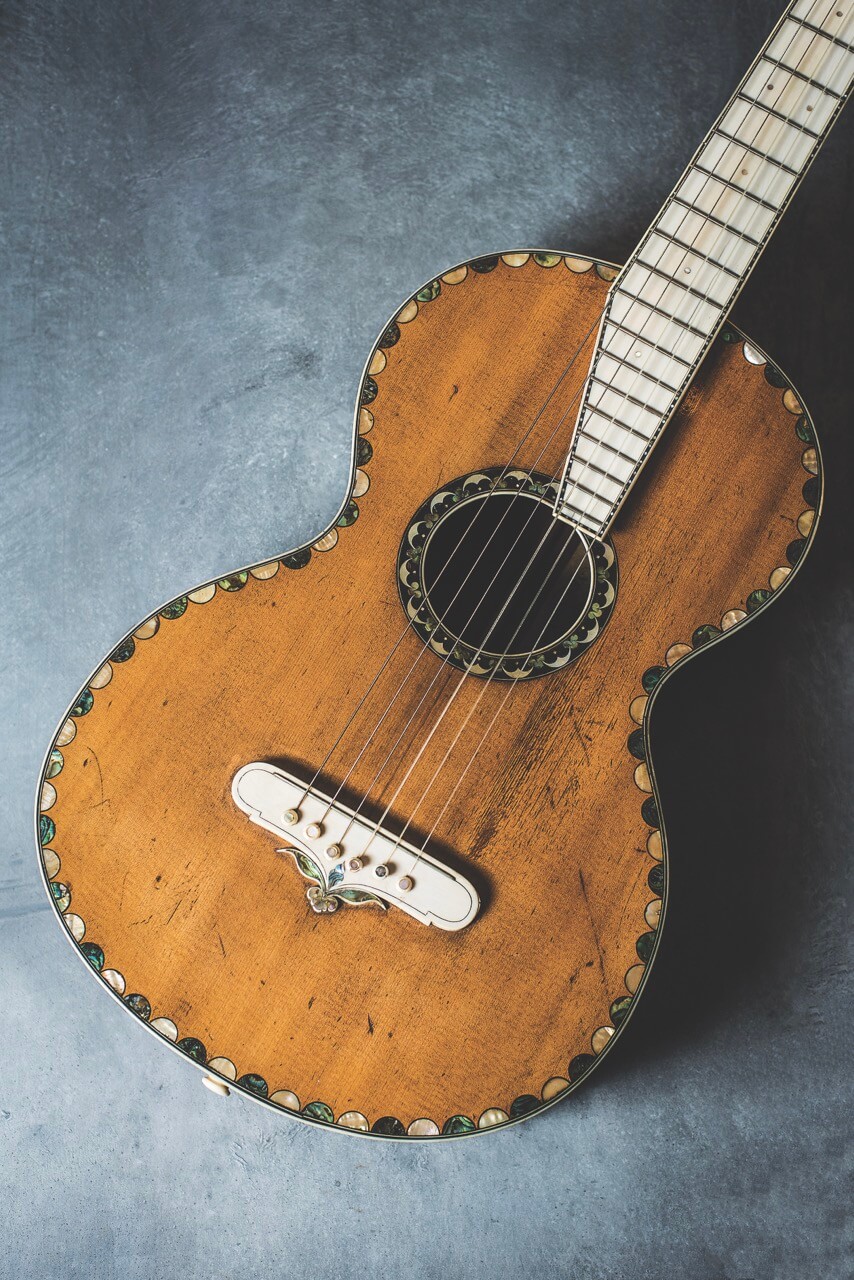
Greatest Generation
Martin at this point mainly produced ‘Stauffer-style’ acoustic instruments, and it quickly made a name for itself. Martin was the first company to use X-bracing on a large scale, while Frederick’s development of the dovetail neck joint was hugely influential, enhancing the tonal transmission from the neck to the body.
X-bracing was considered unsubtle by most guitar makers in Europe at the time, who favoured a fan bracing pattern, but Martin broadly stuck with it, and it would eventually prove a masterstroke. As the guitar became more popular as the 20th century dawned, so did the demand for more volume, which led to the introduction of metal strings instead of the traditional catgut.
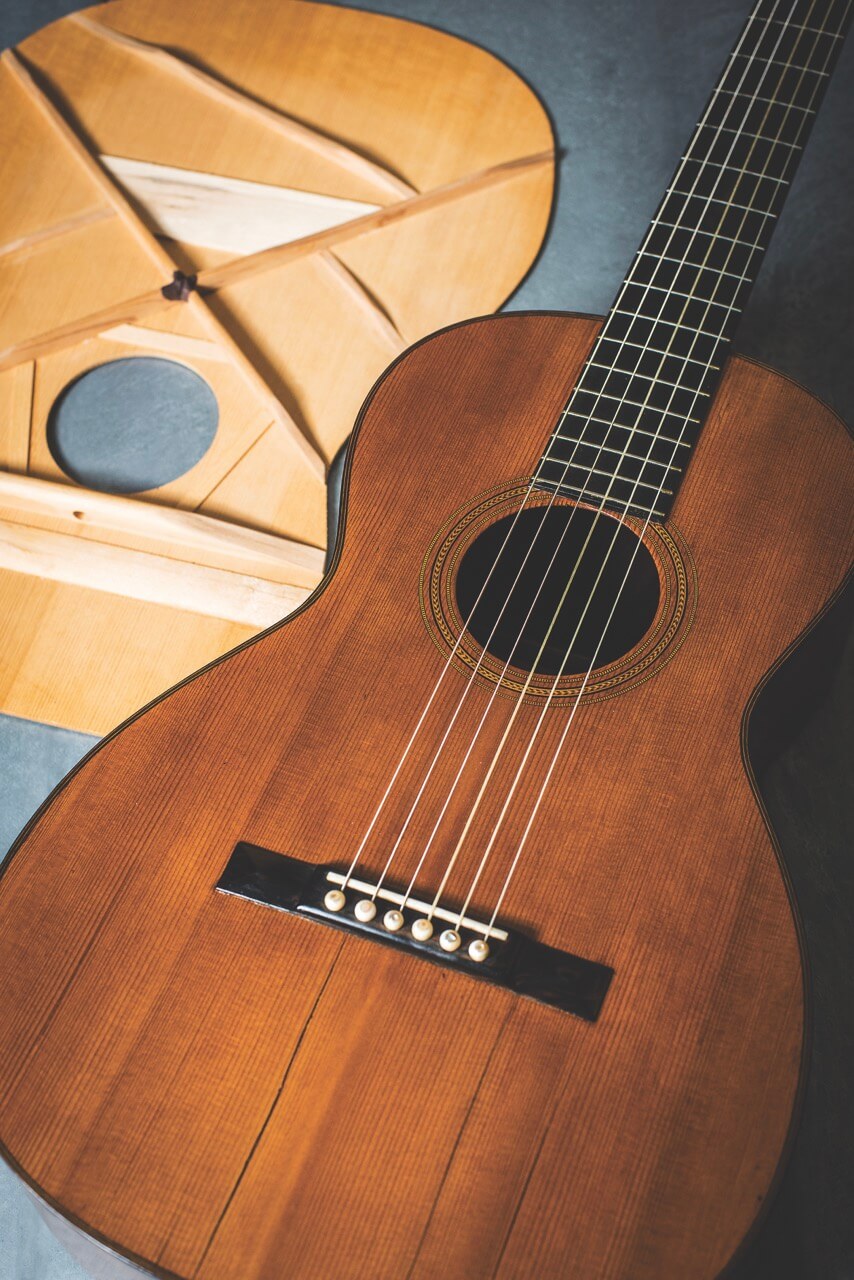
Steel strings put a great deal more tension and pressure on the top of an acoustic guitar, and the strength of Martin’s X-bracing pattern made it far more robust, and therefore better able to cope with steel strings, and enabled the company to create larger guitars that would project more and enable the guitar to be heard above a band. At least eventually…
The Dreadnought
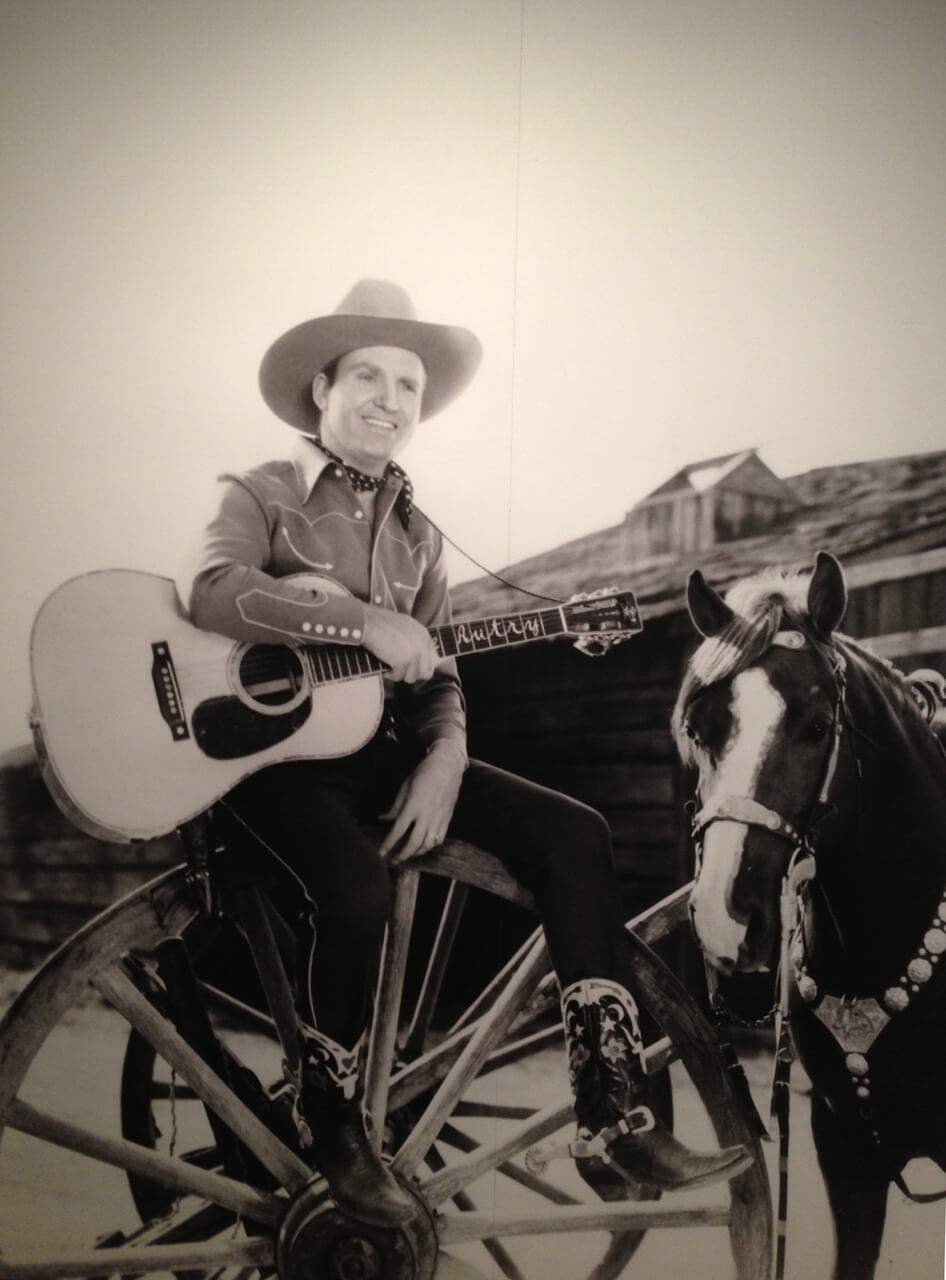
Perhaps the most visible and enduring part of Martin’s legacy is the Dreadnought body shape, which the company first introduced in 1916. Now, the dread might be one of the most popular acoustic guitar body styles today, but it had a troubled birth. Despite being larger and deeper than most guitars of the age, it used fan bracing and as such it was a total flop that was soon retired.
In the 1920s, Martin struggled as upstarts like Gibson arrived on the scene, and relied on its ukulele business to stay afloat. The Great Depression left Martin in a perilous state, but the brand innovated its way out of trouble, introducing the 14-fret neck and the revolutionary Orchestra Model body shape in 1929.
Then in 1931 the Dreadnought got another chance, reconceived this time with X-bracing, the guitar arrived just in time to ride the wave of popularity of the burgeoning bluegrass scene.
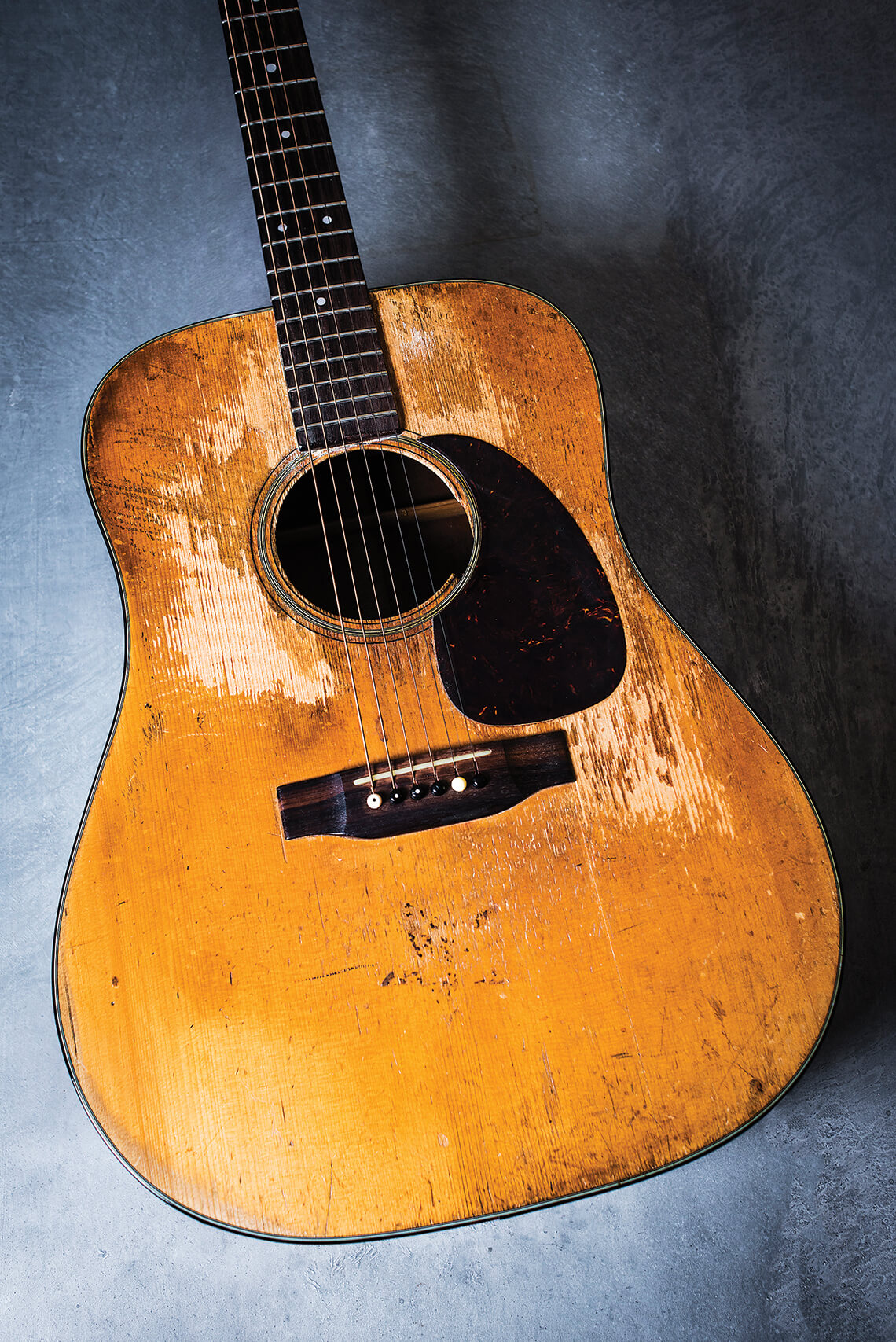
With the new bracing, Frank Henry Martin’s previously maligned body shape was able to maintain its sonic space against other instruments thanks to its tight sound and focused midrange. It was the birth of the modern flat-top acoustic guitar, and for that we should all be thankful.
The Dreadnought and the Orchestra Model would continue to drive the company’s growth up until the Second World War turned manufacturing in the US on its head, and indeed the pre-War Martin Dreadnought is considered by many to be the pinnacle of guitar making to this day.
Part of this is because the X-bracing pattern used in the pre-War models in these was slightly different to that used after. The braces were scalloped and closer to the soundhole. These factors combined with the use of Adirondack spruce for the top and Brazilian rosewood for the back and sides give these guitars a rich resonance that remains a tonal benchmark.
The Swinging 60s
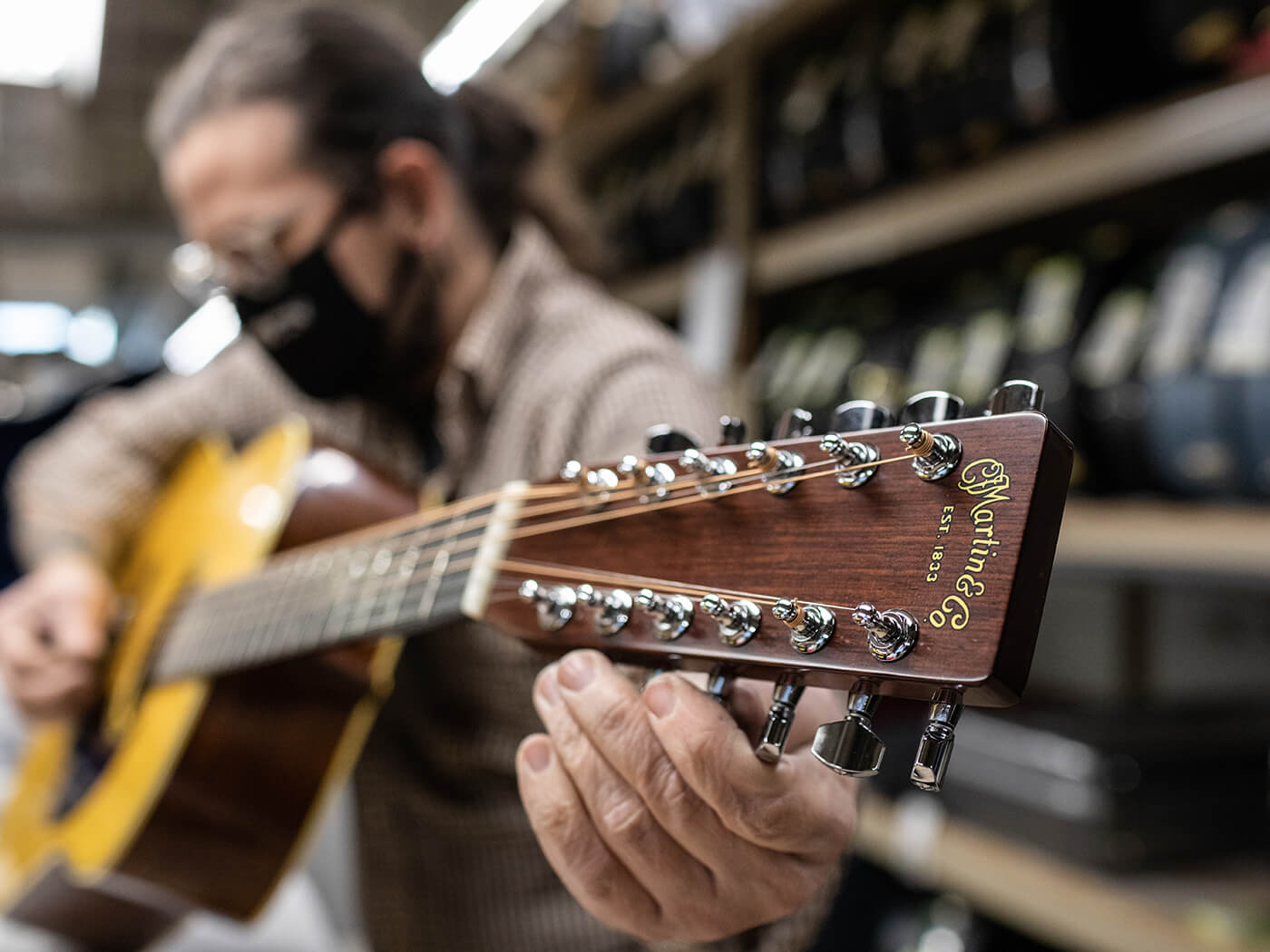
Martin attempted to keep pace with newfangled developments such as archtops and electrified hollowbodies in the 1960s, and even attempted to get into the electric game in the second half of the decade with the GT-70 and 75. These archtop hollowbodies had a distinctly Gretsch/Guild flavour, but they never caught on and only around 700 of each were built.
These forays didn’t stop Martin being at the forefront of the next cultural movement however. As the folk boom spread across the world, the movement’s biggest names – from Bob Dylan and Joan Baez to Martin Carthy and Davy Graham – all used Martin guitars.

As the 60s became the 70s and rock got harder, there was still a place for a Martin acoustic, with David Gilmour and Jimmy Page rarely seen without their trusty Nazareth flat-tops. Gilmour’s 1969 D-35 became so iconic that it would sell for a million dollars at auction in 2019.
Strength to (mostly) Strength
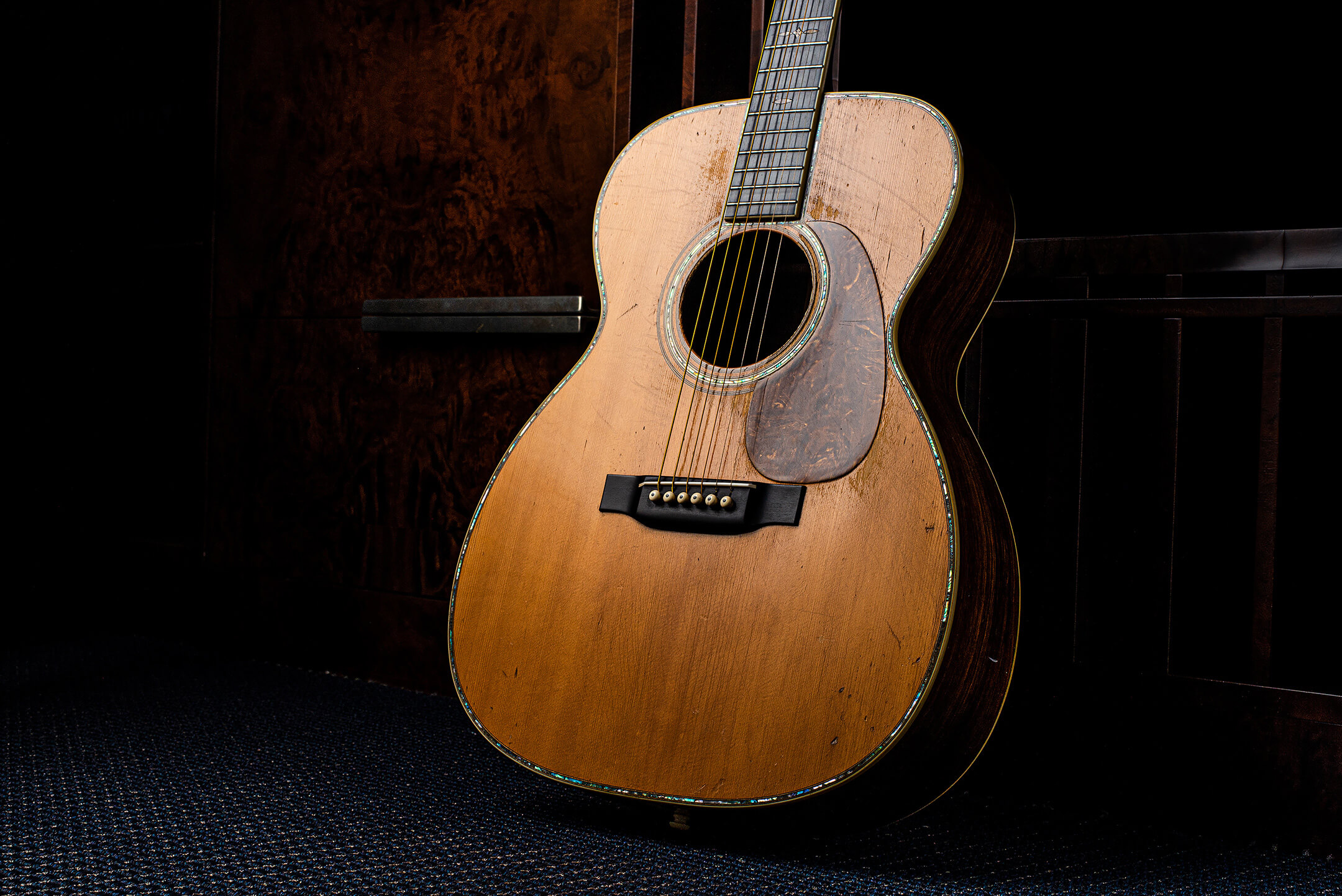
The 80s was a strange time for many instrument companies, and Martin was not immune to this. The Stinger series of electric guitars came around in 1985, and with their Korean build and S-type solidbody design it was hard to find much Martin DNA there, and it’s a footnote the company would probably rather forget!
Despite this, Martin continued to produce well-regarded acoustic guitars and in 1990 the company hit the milestone of 500,000 guitars made. The 90s would be a time of growth and innovation for the brand, introducing its first laminate acoustic, the D1, in 1993, and later pushed to make guitar building more sustainable (and affordable) with the introduction of the DX series, which uses high-pressure laminate bodies and ‘stratbond’ necks.

It was also a period where Martin was in the pop consciousness more than it had been in years, with MTV’s Unplugged series putting Martin front and centre in the hands of Eric Clapton, Kurt Cobain and many others.
Just 14 years after hitting the 500,000 milestone, Martin celebrated their one millionth guitar made in 2004. The occasion was marked with a special instrument that was adorned with more the 40 precious gems – it was fittingly said to be worth $1 million.
Keeping it in the Family
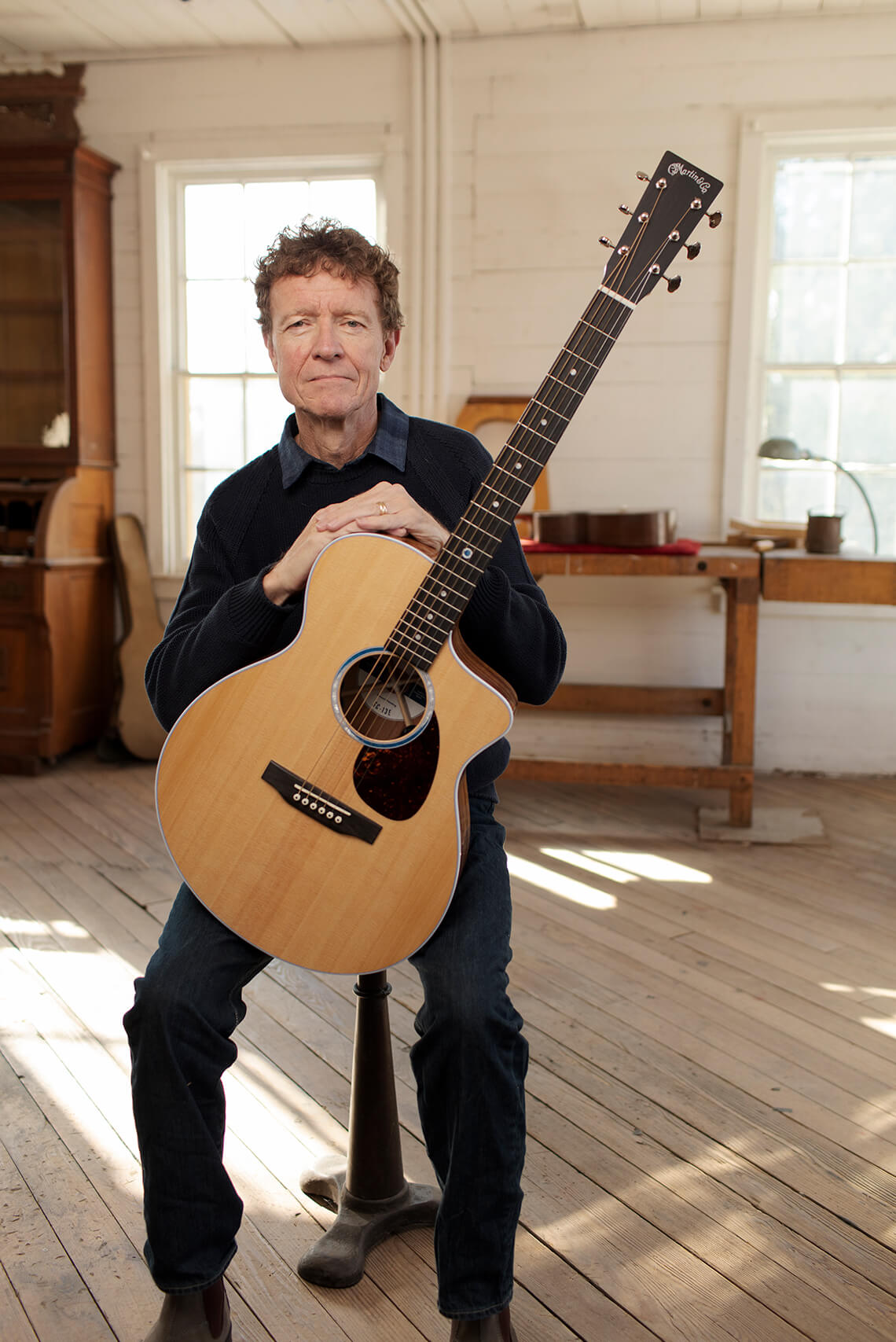
From the company’s beginnings in 1833, Martin guitars has been all about the family. Six generations later this is still true, with the company having gone from strength to strength under the stewardship of longtime CEO (and current Executive Chairman) Chris Martin IV.
While there have been some bumpy moments along the way, this through-line back to the company’s founding, and the hugely innovative and influential pre-War period, is a big part of why the company endures.
This was clearly evidenced by the radical SC-13E, which was launched in 2020 – a guitar that blurred the lines between acoustic and electric with a body shape unlike anything we’d seen before.
In an ever-changing guitar industry, Martin’s family name ensures that it keeps those principles of quality and craftsmanship at the forefront, while still striving to try something different.




